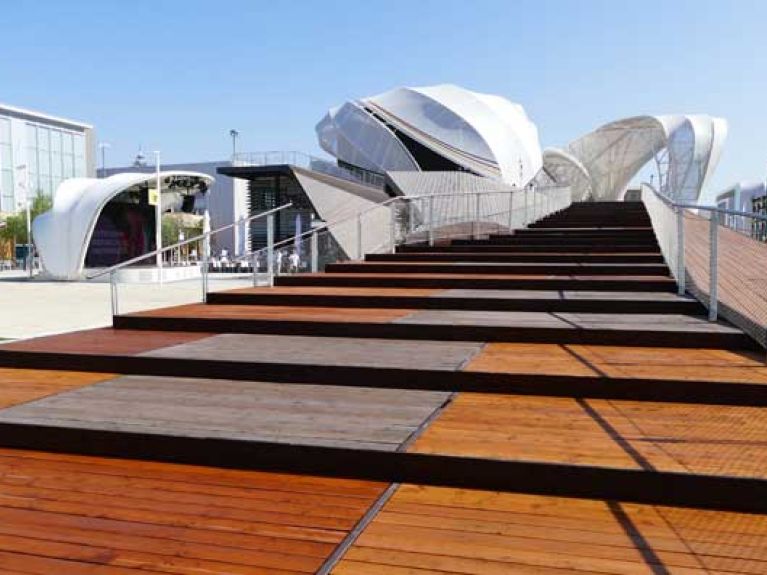The secret star at the Expo
A cardboard tablet is causing excitement and good numbers of visitors to the German Pavilion at Expo Milano 2015.

The first half of Expo Milano 2015 is already over, and Germany is satisfied with the positive results. “The stream of visitors is huge, the atmosphere is great, and the German Pavilion is very popular indeed. La Gazzetta dello Sport, one of Italy’s leading newspapers, even said that the German Pavilion was the best Expo contribution of them all,” says Dietmar Schmitz, Commissioner General of the German Pavilion from the Federal Ministry for Economic Affairs and Energy (BMWi). Visitor statistics for the first two months of the Expo as a whole totalled more than six million, and the German Pavilion notched up a good percentage with 12,000 visitors per day.
A cardboard tablet. How does that work?
The secret star of the Expo is a simple piece of cardboard. Each visitor receives one as they enter the German Pavilion, 20 x 10 centimetres in size. When you open it up, you see white paper and a few dots on the upper edge. But after taking just a few steps, the strange device suddenly springs to life Images and texts appear on the paper. Just like on a tablet computer. How does that work? The so-called SeedBoard itself does not contain any electronics. The visitor is in fact holding a projection surface. The dots on the edge transform it into a medium. They serve as markers, and the real technological secret is located on the ceiling of the exhibition spaces. Each of the virtual exhibits is practically an invisible showcase. Above it there is an infra-red camera. It focuses on the dots on the SeedBoard and precisely locates its position within the room. This information is registered by a computer system which analyses and interprets the data, and then operates a projector based on the results. This then projects images and texts onto the open SeedBoard.
The visualisations are very dynamic. The cameras register not only the cardboard object’s position, but also its changes in position. Thomas Frenzel, Creative Director of media at the Milla & Partner communications agency in Stuttgart, which developed the SeedBoard specifically for this purpose, says this is illustrated particularly well in the presentation of the ecosystem ‘Soil’. “By moving the projection surface up and down, I can gain a three-dimensional insight into the exhibit.” He says this enables visitors to discover it layer-by-layer and centimetre by centimetre. In other places the information is provided in a series of exhibition panels. The observers can browse through them, like in a picture book, by simply tiling the SeedBoard.
But how does the system recognise the visitor’s preferred language? Mr Frenzel says that again the dots play a decisive role. The number of dots is not always alike. Although each SeedBoard has at least five, some of them have six, seven, or even eight. The infra-red cameras recognise the difference. The number of dots is the identification code. For instance eight dots mean that this person wants information in French. Visitors say which language they need when they receive their SeedBoards. However, Thomas Frenzel admits that only four languages were included in the programme for technical and financial reasons. German, English, Italian and French. The name for the cardboard tablets was chosen deliberately. “Visitors should be able to collect ideas that can then can grow like seeds in their minds,” says Mr Frenzel – just like the English word seeds suggests.
Visitors to exhibitions are likely to come across the SeedBoard technology more often in the future. Thomas Frenzel says: “We will continue using them and developing them further. For instance, there are promising perspectives in the area of museum education”. And he adds: “Visitors often oversee exhibition contents that aren’t interactive”. In contrast, the SeedBoard provides an excellent key to reaching people’s understanding.
Expo Milano 2015 on the topic of “Feeding the Planet, Energy for Life” until 31 October 2015

